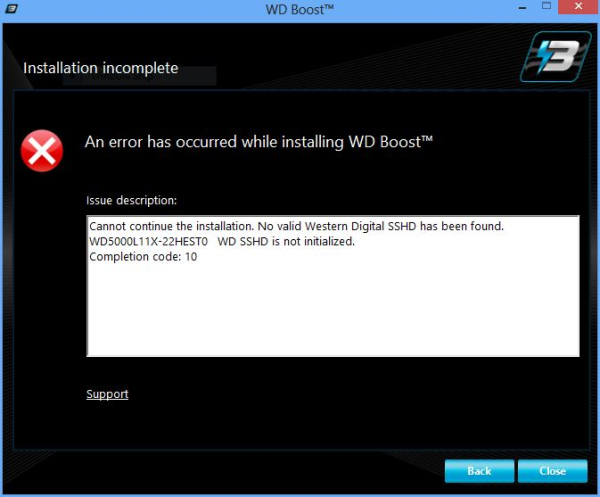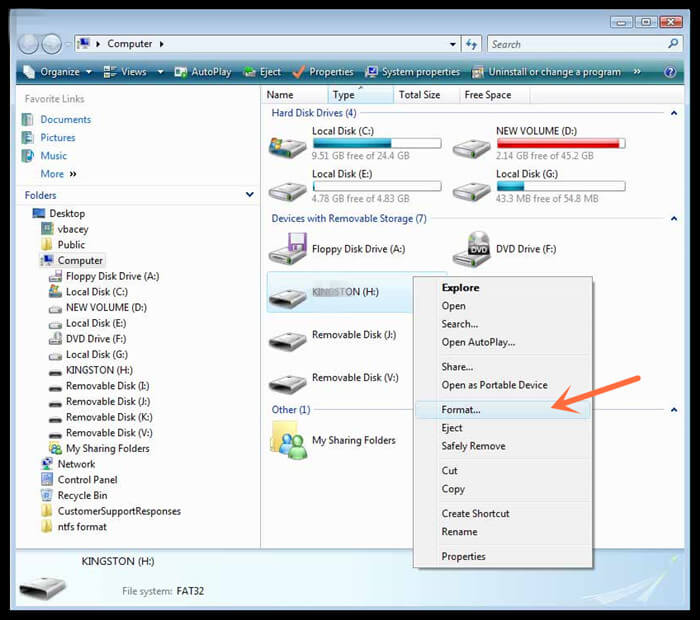

The above methods apply to all kinds of storage devices like an HDD, SSD, or even NVMe SSD devices.If you buy an external drive-such as one of our recommended portable or desktop hard drives, portable solid-state drives, or USB 3.0 flash drives-you may need to reformat it to work with your operating system of choice, since different operating systems use different file systems to process data.Īlthough it’s true that any drive is compatible with both Windows and macOS once it’s formatted properly, most drives come preformatted for Windows out of the box. Click ‘OK’ again and your drive will be formatted. Click on ‘OK’ to continue.Īnother window will appear. Change the Volume label if you wish and keep everything as it is. Now, Right-click on the block that represents the drive you wish to format and then click on ‘Format…’ option from the context menu. The Disk Management window will open and you will be able to see the drives presented as blocks in the bottom half of the window. Type disk diskmgmt.msc inside the search box and press Enter. Start with launching the Run window by pressing windows+r. You can use the Disk Management feature of Windows to format drives.
#How to format wd elements for windows how to
How to Format a Hard Drive using Disk Management Note: The time it will take to format the drive will depend on the speed of your Hard Drive and also the amount of data stored in it. Click on Start and the drive will be formatted. If you wish to change the name of the Drive then you can by typing it in the text box below ‘Volume label’. Keep everything default in the new window. On the File Explorer window, click on ‘This PC’ to see all the devices and drives you have on your computer.įrom there, right-click on the drive you wish to clean and click on ‘Format…’ option from the context menu. To start, launch the File Explorer by pressing Windows+ e or by going to Windows Search. How to Format a Hard Drive from the File Explorerįormating a Hard Drive using File explorer is even easier than the previous method. After a short moment, your Drive will be formatted and everything will be erased. Keep everything as it is and click on Format. Here you can give a name to your drive by typing it under the Label section. The Format Volume dialog box will appear. Now, click on the Drive you wish to format and then click on the ‘Properties’ button.Īfter that, scroll down and you will see the ‘Format’ button.

It will show you a list of storage devices you have on your computer and also how many drives you have. On the Settings window, scroll down and click on ‘Storage’.įrom there, scroll down again and click on ‘Advanced storage settings’ located in the Storage Management section.Īfter that, from the expanded options, click on ‘Disks & Volume’ option. First, open up the Settings app by pressing Windows+ i or by searching for it in Windows Search.

The process of formatting a Hard Drive from the Storage Settings menu is very simple. How to Format a Hard Drive using Storage Settings It will delete the OS files and make your system crash. Note: Never format your ‘Local Drive’ or ‘C Drive’ or the drive where you keep your system files. Follow the methods discussed here to know about multiple methods that you can use to easily format your Hard Drive. Whatever the case may be, if you need to format your Hard Drive on your Windows 11 computer, this article got you covered. For example, if you wish to clear junk files or cached files that you are unable to remove manually or if you wish to use a different file system etc. Many other cases also call for formatting your Hard Drive. If you want to do a fresh installation of Windows 11, you must format your Hard Drive. If it is a new Hard Drive, then it is recommended to format it before you use it. There can be many instances where formatting is required. Formatting the Drive can be a solution to these problems. Sometimes the Hard Drives in our computer can get corrupted or they can get slower over time. Easily format an HDD, SSD, or NVMe SSD storage device on Windows 11 using Storage Settings, File Explorer, or the Disk Management app.įormatting a Hard Drive refers to deleting everything that’s in the Drive.


 0 kommentar(er)
0 kommentar(er)
